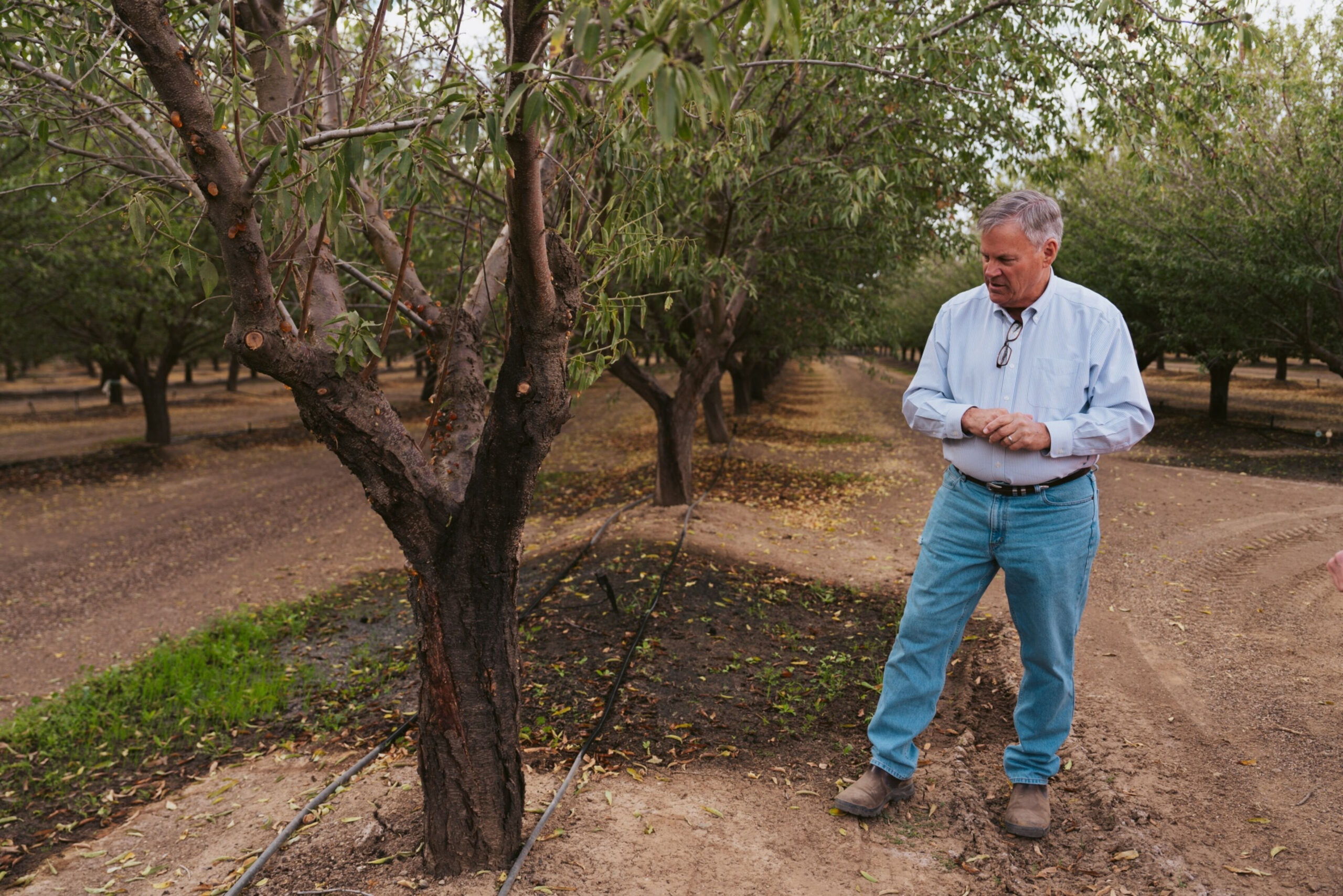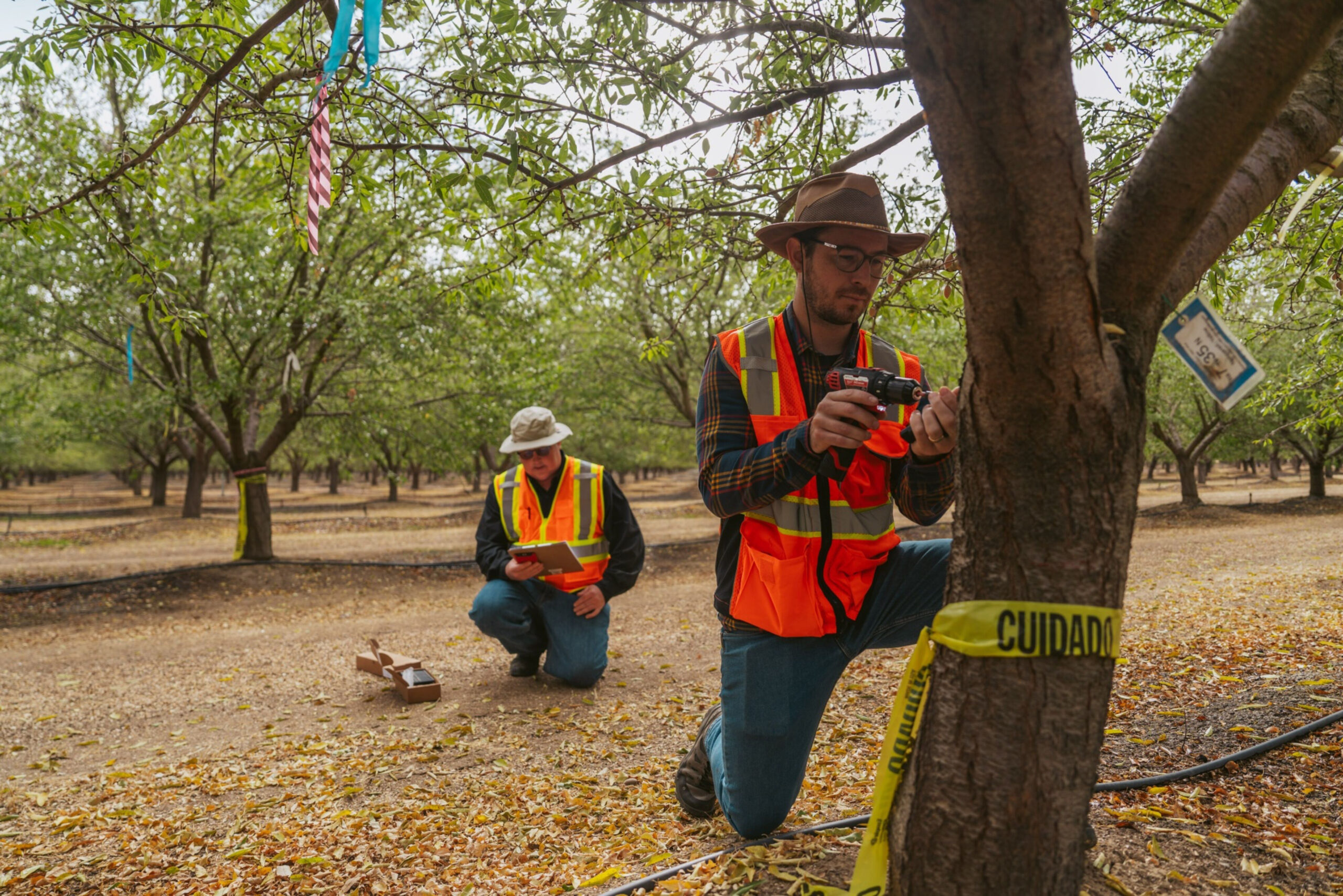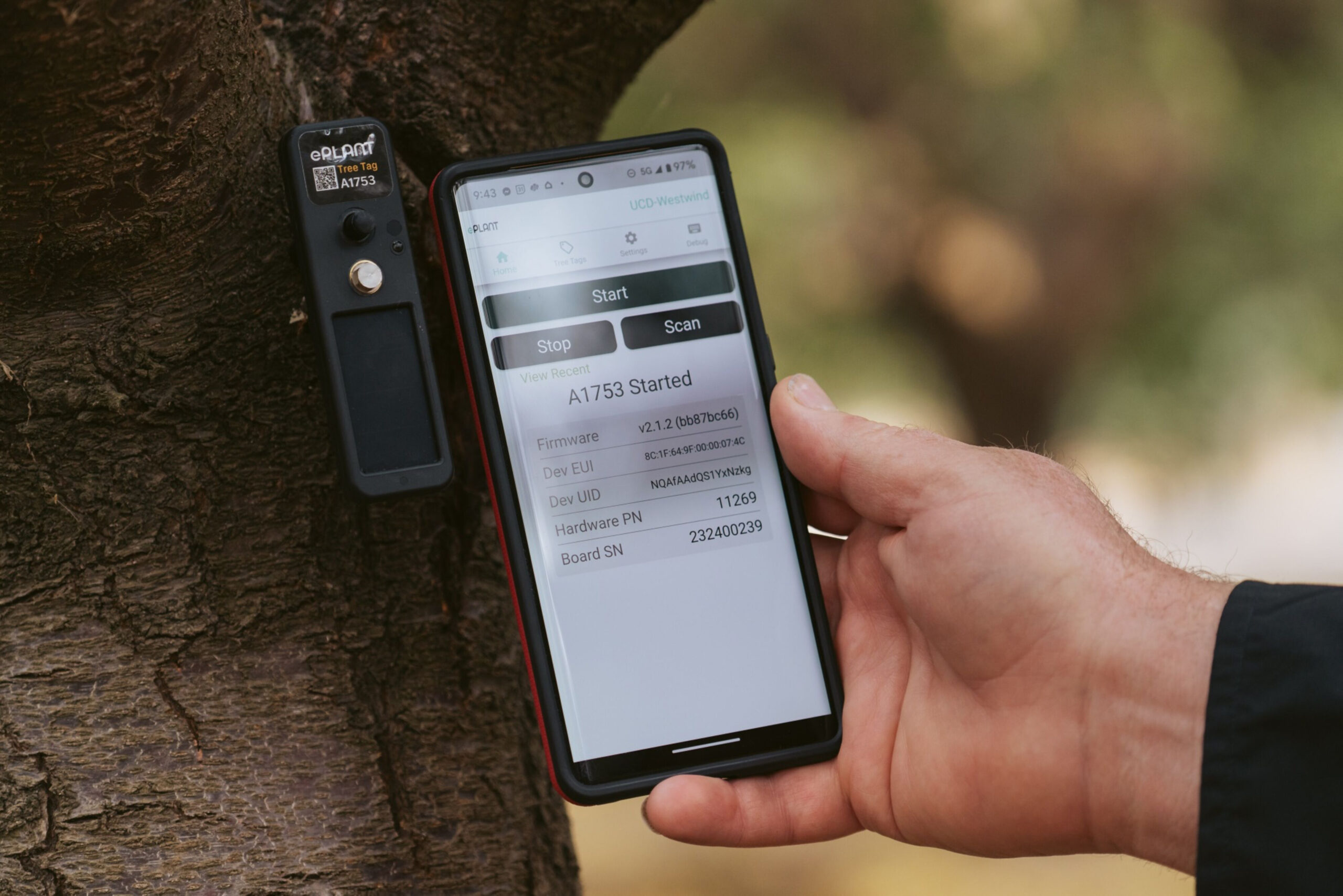CALIFORNIA (BLOOMBERG) – Over the past several weeks, the majestic California buckeye tree that shades my backyard has been sharing intimate details about its inner life – how much it grows each day, its drinking habits and whether it’s at risk of falling down.
Those insights are being generated by a slim device attached to the buckeye’s bark. Called a TreeTag, it’s about the size of a small television remote and features a suite of sensors, a solar panel and a wireless radio that transmits data to my phone via the cloud. Silicon Valley startup ePlant aims to install thousands of TreeTags across urban landscapes, orchards, vineyards and forests imperilled by climate change. The goal: to create an internet of trees that improves our understanding of rising temperatures’ arboreal impacts.
“The trees in our world are in trouble,” says Graham Hine, ePlant’s co-founder and chief executive officer. “They are essential for the climate and essential for us and the planet, so we wanted to build a technology that was capable of monitoring them at scale.”
Hine was previously CEO of Silicon Valley-based Liquid Robotics, which makes a sensor-laden ocean-going robot and was acquired by Boeing in 2016 for USD300 million.
The tech inside a TreeTag isn’t new. Sensors that measure temperature, humidity and movement can be bought off the shelf. A specialised sensor called a dendrometer has long been used to measure the minute swelling and shrinking of trees’ trunks as water is absorbed into their tissues at night and evaporated through their leaves during the day. Those contractions can indicate whether a tree is getting too much or too little water.

What ePlant has done for the first time, though, is to combine all those sensors in a small, inexpensive gadget. Like a forestry Fitbit, TreeTags can give homeowners, farmers and forestry managers early warning when trees start to become water stressed or are in danger of toppling. That data can allow growers, for instance, to better target scarce water supplies for irrigation.
TreeTags are still in the rollout phase with ePlant’s commercial clients, whom the startup charges USD50 annually for each tag and all the data it produces. A release date remains to be set for residential TreeTags, which will run customers USD249 apiece, including a year’s access to the data before a USD1.99 monthly fee kicks in.
“It’s such a cheap and robust technology that you can instrument dozens or even hundreds of trees,” says Patrick Brown, a professor in the department of plant sciences at the University of California at Davis. “It gives you a chance to measure a whole lot more variability than you would ever get with more expensive alternatives.”
On a temperate morning in October, boxes of TreeTags are stacked in the bed of Hine’s white Rivian electric pick-up truck, where they can charge in the sun. A crew from ePlant is visiting Westwind Farms, a 160-acre almond orchard west of Sacramento, California, to install the sensors on 200 almond trees.
Westwind’s owner, Kirk Pumphrey, has turned his farm into something of a sustainability laboratory. Since acquiring the property in 2013 and planting 29,000 thirsty nut trees, he’s been working with Brown and other UC Davis scientists to reduce the trees’ water consumption and optimise their output. Such efforts range from using sensors to better target irrigation to spreading a mulch of almond hulls around the trees to minimise evaporation.

Pumphrey says these initiatives cut Westwind’s water use about 4 per cent during California’s recent record drought. He hopes TreeTags will help him save even more water by shedding light on how he might target the use of expensive fertilisers and tailor irrigation to specific tree varieties.
“We want the trees to talk to us so that once we get that feedback, we can feed them accordingly,” Pumphrey says.
As ePlant workers spread out across the grove, they stop at almond trees Pumphrey wants monitored. Squatting down, Hines drills a small, harmless hole in the trunk, screws in the TreeTag and activates the device with his phone. The process takes just a few minutes. The device’s solar panel charges a hybrid lithium-ion capacitor that powers the TreeTag, which can transmit data over a distance of more than a mile to a router that relays the information to the cloud.
Sun World International, a Bakersfield, California-based company that develops and licences new fruit varieties, has installed 200 TreeTags as part of its climate resilience breeding program.
“We’re excited about having something that you can actually attach to the plant itself to get a plant-specific reading,” says Taylor Crow, biostatistics and quantitative genetics lead for Sun World, who previously used TreeTags on cocoa trees with a different employer. “The TreeTags allow you to see very clear signals of over-irrigation, which actually is more of an issue than under irrigation.”

The data generated by the TreeTags could help Sun World determine the water needs of different genetic varieties of table grapes and stone fruits. “The device itself has temperature and humidity sensors so you can actually also use these as sort of a real-time weather station to help make better management decisions,” says Crow.
EPlant will also be deploying TreeTags at a project in Saudi Arabia, which has pledged to plant 10 billion trees. “Tree survival and water usage is critical and instrumentation that can help refine water usage is of huge interest there,” says Hine, who declined to identify the client due to a confidentiality agreement.
In Lahaina, Hawaii, the site of devastating wildfires in August, a dozen TreeTags have been attached to a giant and revered banyan tree to monitor its recovery. “We’re starting to see signs of life,” says Hine. “It doesn’t have leaves so it doesn’t do the full daily evaporation cycle, but it does respond to humidity and it is growing in a couple of different areas”
TreeTags could also help scientists monitor real-time climate impacts on redwoods, conifers and other ecologically significant trees, according to Rosemary Sherriff, a professor at Cal Poly Humboldt who studies Western forests. “It could absolutely be useful in the work that I’m involved in as we want to be collecting local weather data along with tree-response data,” says Sherriff. She noted that one potential limitation might be TreeTags’ ability to transmit data in remote and rugged terrain.
My California buckeye has reliably kept me updated on its condition, though the conversation – consisting of a series of numbers beamed to my phone – is rather dry. That could soon change. For residential TreeTags, ePlant is incorporating artificial intelligence program ChatGPT into its platform, which will allow trees and their owners to talk to each other directly.
According to the company, a chat with a eucalyptus tree might go something like this:
Such a discussion would be particularly relevant in the San Francisco Bay Area, where the soaring Australian natives are abundant and prone to falling without warning, sometimes with deadly consequences.
“I speak for the trees, for the trees have no tongues,” says the Lorax in Dr. Seuss’ iconic environmental fable. Thanks to AI, the trees, it seems, will soon be able to speak for themselves.







